Medieval Chess Masters Crossing Swords
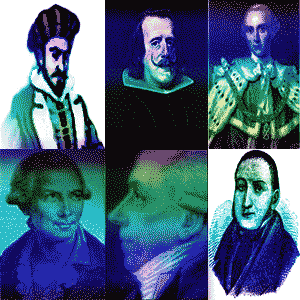
The first great chess masters of Europe emerged when the Moors brought chess from North Africa to Spain in the Middle Ages. The modern rules came about in the late 15th Century.
Spain and then Italy were the first European chess super powers. The game spread inexorably across the continent. France, Britain and Germany, followed by all the others, caught the chess fever.
Spain and then Italy were the first European chess super powers. The game spread inexorably across the continent. France, Britain and Germany, followed by all the others, caught the chess fever.
The masters would play for stakes in front of large crowds in the great cities throughout the four corners of Europe. They played attacking chess, often opening with gambits.
Chess cafes appeared from the Atlantic to the Alps, down along the Danube and finally stretching all the way to the Ural Mountains, having reached right into the very heart of Russia. Chess had become embedded in European culture.
Ruy Lopez De Segura
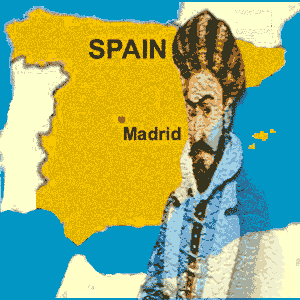
Ruy Lopez de Segura (1530-80) was a Spanish priest and later bishop. He defeated the top Italian masters in Rome at the age of 30. He was then considered the chess Champion of the World.
He went to Rome in 1571 to face Giovanni Leonardo and Paulo Boi, Italy's two best players. He won both matches to cement his status as champion. The same two players arrived in Madrid four years later and exacted revenge. Both men beat Lopez in matches in front of King Felipe II. His tenure as the Europe's leading player had come to an end.
Lopez wrote some noteworthy chess books, Libro de la Invencion Liberal y Arte del Juego del Axedrez (Book of Liberal Invention and Art in the Game of Chess). He also has a large opening system named after him, the Ruy Lopez Opening which runs 1.e4 e5 2.Nf3 Nc6 3.Bb5.
Giovanni Leonardo da Cutri
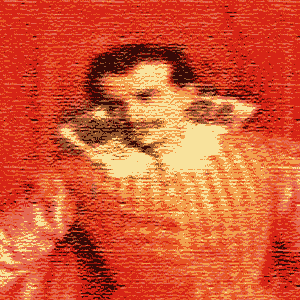
Giovanni Leonardo da Cutri (1542-87) was the first of Italy's great chess masters. He was known as Il Puttino. He was born in Cutro in southern Italy. He studied law but found he had a talent for chess.
He and Paulo Boi had a long struggle for dominance of Italian chess. They played many times and were said to be equals. Both took part in a big international tournament in Rome in 1560. The Spaniard Ruy Lopez won the tournament, putting all others in the shade. He beat Leonardo once again in a match in 1571 in Rome.
Four years later the Italians turned the tables on Lopez. Leonardo and Boi both traveled to Madrid and both beat the Spanish bishop. Leonardo also triumphed over Boi in Madrid and was from that point until his death considered the World Champion. The pendulum had now swung to Italy.
Paulo Boi
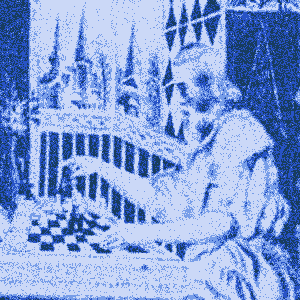
Paolo Boi (1528-98) was born in Syracuse, Sicily. He was known as Il Bove (the Ox) or Il Siracusano owing to his home town. He learned chess as a young child and was soon the best player in Sicily.
As his reputation grew he was invited to play in front of nobility across Italy and even France. He eventually began to challenge Leonardo as the best player in Italy. They played many times and for the most part seemed evenly matched.
In 1575 Boi and Leonardo went to Madrid for a tournament containing the best players in the world. They both laid waste to the field including Ruy Lopez. Leonardo won the tournament.
In 1575 Boi and Leonardo went to Madrid for a tournament containing the best players in the world. They both laid waste to the field including Ruy Lopez. Leonardo won the tournament.
Both players went to Lisbon to play against the Portuguese champion Il Moro. Again both were victorious. Boi lost a match against Leonardo who was then regarded as champion. After Leonardo's death in 1587 Boi was seen as the champion until his own death in 1598.
Giulio Cesare Polerio
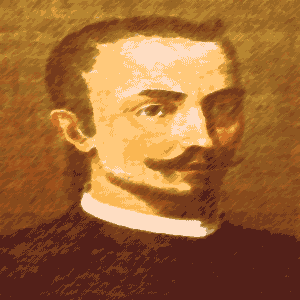
Giulio Cesare Polerio (1548-1612) was an Italian master who made significant contributions to chess analysis and theory. Salvio wrote of him in his work Il Puttino. Polerio was a good friend of Giovanni Leonardo.
Polerio wrote a number of codexes containing games played in international chess by himself and other strong masters from Italy, Spain and Portugal. He came up with new ideas for some chess openings.
His main contribution is the Polerio Gambit inside the King's Gambit: 1.e4 e5 2.f4 exf4 3.Nf3 g5 4.Bc4 with the Main Line continuing 4...g4 5.0-0! gxf3 6.Qxf3. The work that contained this line was only investigated and translated by Antonius van der Linde in 1874. By that time the line was already named the Muzio Gambit.
Alessandro Salvio
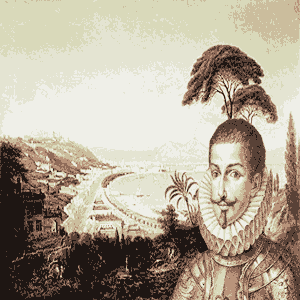
Alessandro Salvio (1570-1640) from Naples, Italy ruled the chess world from 1598 to 1620. He had a privileged upbringing and studied to become a doctor. He beat Paulo Boi just before Boi's death to gain recognition as World Champion.
Salvio founded his own chess academy and wrote the chess work Trattato dell'Inventione et Arte Liberale del Gioco Degli Scacci (Treaty of the Liberal Arts and Invention of the Game of Chess).
He excelled in blind exhibitions, performing many of these in Naples. He gained notoriety from this and was soon invited to play in front of prominent people in Italian society. By the time he was playing for the Pope he knew he was on his way.
Gioacchino Greco
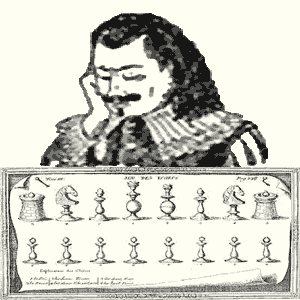
Gioachino Greco (1600-34) also known as Il Calabrese was born in Celico, Italy in the same province as Leonardo's home town Cutre. He was the dominant force in chess throughout the 1620s.
Greco swept right up through Italy and France playing chess for stakes quite successfully. He was the first player to systematically record his games. He made copies and gave them to powerful people that he knew.
He later crossed the English Channel and enjoyed great success in London. Later he found himself in Spain playing at the at the court of King Philip IV. A nobleman there suggested he travel further afield. He went to the Caribbean and the New World. He took ill while on this adventure and died at the young age of 34.
Philipp Stamma
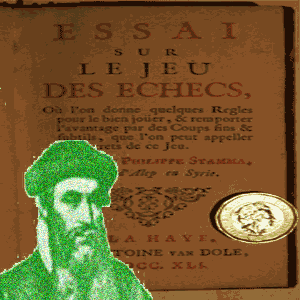
Philipp Stamma (1705-55) was born in Aleppo, Syria but later settled in England. He wrote the acclaimed work Essai sur le Jeu des Echecs (Essay on the Game of Chess) in 1737.
While still in Syria, Stamma had been a very strong Shatranj player. When he moved to Europe he had to adjust to the rule changes from 1475 that differentiated Western chess from the Arabic version. He did just that and became the leading player in England.
The Frenchman Philidor arrived in London in the 1750s and humbled all before him including Stamma. Their match in 1747 was a little one-sided but Philidor was about to begin a half century reign of supremacy.
Legall De Kermeur
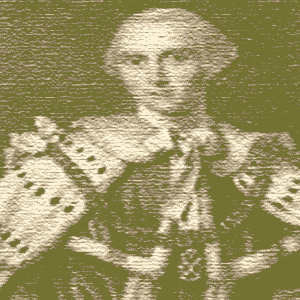
Philipp Stamma (1705-55) was born in Aleppo, Syria but later settled in England. He wrote the acclaimed work Essai sur le Jeu des Echecs (Essay on the Game of Chess) in 1737.
While still in Syria, Stamma had been a very strong Shatranj player. When he moved to Europe he had to adjust to the rule changes from 1475 that differentiated Western chess from the Arabic version. He did just that and became the leading player in England.
The Frenchman Philidor arrived in London in the 1750s and humbled all before him including Stamma. Their match in 1747 was a little one-sided but Philidor was about to begin a half century reign of supremacy.
Francois-Andre Danican Philidor
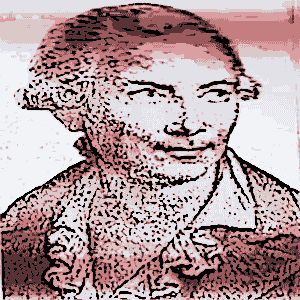
Francois-Andre Philidor (1726-95) was the French master who brought chess to a different planet. He was born into a family steeped in musical tradition. He enjoyed a deeply distinguished musical career, recognized as one of the greatest composers in France.
His achievements in chess were no less impressive. He began playing regularly at the Cafe de la Regence from the age of 14 under the tutelage of Kermeur. At first Kermeur could give him rook odds but within 3 years Philidor was playing him on equal terms.
Philidor returned to Paris from successful exploits in England and Holland and beat Kermeur in a match. He was now recognized as the World Champion and held that status until his death in 1795. His biggest revelation of many was his recognition of the pawn's role in chess. He described the pawns as the soul of chess.
Alexandre Deschapelles
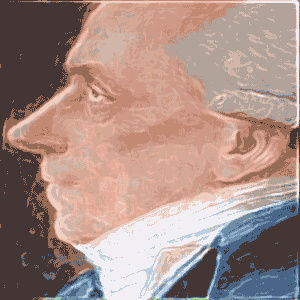
Alexandre Deschapelles (1780-1847) was another French master who dominated chess between the eras of Philidor and La Bourdonnais. He was at the top from 1800-20. He was also very successful in other games. He beat the Polish Draughts champion of France and excelled in the card game Whist.
He served in the French army under Napoleon, losing his right hand during the Siege of Mainz. He also suffered a scarring slash wound from his temple down to his chin. This did not stop him from becoming a brilliant billiards player. He used the remainder of his right arm to push the cue!
Like many chess masters he took on a number of students. One of these was Louis de la Bourdonnais who only began to play seriously in 1818. By 1821 Deschapelles lost heavily to his student and retired.
Louis-Charles Mahe De La Bourdonnais
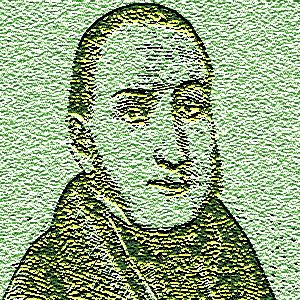
Louis-Charles Mahe de La Bourdonnais (1797-1840) was a chess master born into the French aristocracy. He inherited vast wealth from his father but lost everything in poorly chosen real estate investments.
He had to survive on his earnings as a professional chess player. He was a much better chess player than investor fortunately. He would conquer the chess world in spite of learning the rules at the relatively late age of 17. He only began to play seriously in 1818, probably as a result of his new found poverty.
He was tutored by the best player in the Cafe de la Regence, Alexandre Deschapelles. In three years he surpassed Deschapelles. He beat him 6-1 in 1821 to take over as the best player in the world. He held that position until his death in 1840. He triumphed over all of his peers including a memorable series against Alexander McDonnell.
Chess Masters - Alexander McDonnell
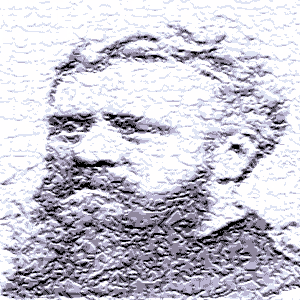
Alexander McDonnell (1798-1835) was an Irish chess master who contested a legendary six match series in the summer of 1834 against the mighty La Bourdonnais. When he won the second of these he could arguably have been considered the World Chess Champion if only for a brief period.
He was born the son of a surgeon in Belfast. He worked as a merchant in the West Indies before settling in London. There he worked as Secretary of Committee of West Indian Merchants. It was a well paid position that allowed him to concentrate on chess.
His career reached it's peak in 1834 when he played a series of six matches against La Bourdonnais. They were unquestionably the two strongest players in the world. The series were considered World Championship matches in all but name. McDonnell won the second match but lost all the others. Just a year later he contracted Bright's Disease and died.
Pierre Charles Fournier de Saint Amant
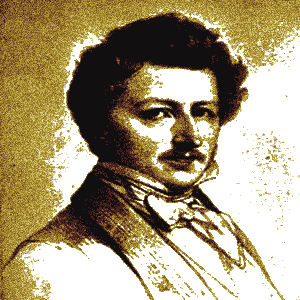
Pierre Saint Amant (1800-72) was a French master who was active mainly in the 1820s - 40s. He was thought to be the strongest player in the world for a couple of years after the death of Labourdonnais.
Saint-Amant worked as an actor and a wine merchant. He also served for a spell in the French military. England was throwing up most of the challengers to French dominance at that time. Saint Amant went to London a couple of years after the legendary clash between Labourdonnais and McDonnell. He overcame the strongest English players before returning to France.
He was back in London in 1843 to face a fresh English challenge in the shape of Howard Staunton. He escaped with a narrow victory by a single point. Staunton arrived in Paris six months later for a rematch at the famed Cafe de la Regence. The Englishman won by five clear points to earn the status of the world's best player.
Howard Staunton
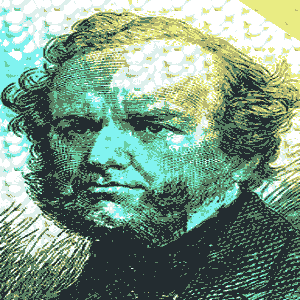
Howard Staunton (1810-74) was the first English master to conquer the chess world. He gained this position with a victory over Saint-Amant in 1843. He maintained that status for eight years.
Staunton ran a chess column for many years and also authored some chess books. The Chess Player's Handbook went to print in 1847 and The Chess Player's Companion followed two years later.
The London Tournament of 1851 marked the end of his reign as the world's strongest player. A field of 16 of the strongest chess masters in Europe was assembled. The German Adolf Anderssen won the tournament, knocking Staunton out on the way.
Moving On
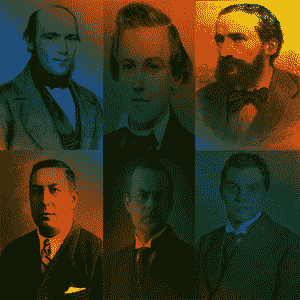
The early chess masters were the result of a growing passion in Europe for chess. They established the early principles of the game. Chess literature in Europe dates from 1500 onwards with some of the early theory still robust today.
More importantly they got the ball rolling and each new wave of players would build on earlier analysis to advance our knowledge of the game. The King's Gambit dates back to the 1500s, the Queen's Gambit dates back to the late 1400s!
They paved the way for later generations to relentlessly advance opening theory, middlegame themes and endgame technique, first refining it to an art, later elevating it to a science. Some of these gifted artists bridged the Classical Era and the Romantic Era to the Modern Era and Hypermodernism.

